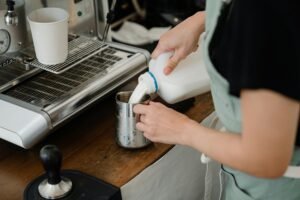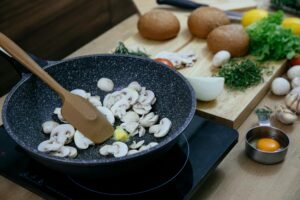How to Make Perfect Espresso at Home
The allure of a perfect espresso is undeniable. The rich, velvety texture, the aromatic intensity, and the delightful crema on top make it a coffee lover’s dream. Crafting such an espresso at home might seem daunting, but with the right knowledge and techniques, you can achieve barista-quality results. In this comprehensive guide, we will delve into every aspect of making the perfect espresso at home, ensuring you master each step.
Understanding Espresso
What is Espresso?
Espresso is a concentrated coffee beverage brewed by forcing a small amount of nearly boiling water through finely-ground coffee beans. It is known for its strong flavor and thick consistency. The quality of an espresso is judged by its taste, texture, and the presence of a golden crema on top.
The Importance of Quality Ingredients
To make a perfect espresso, the quality of your ingredients is paramount. Freshly roasted coffee beans, clean water, and precise grinding are essential. Investing in high-quality beans and a good grinder will significantly impact the taste of your espresso.
Choosing the Right Equipment
Espresso Machine
An espresso machine is the heart of the process. There are various types of machines available, ranging from manual to fully automatic. A semi-automatic machine offers a good balance, giving you control over the process while providing consistent results.
Grinder
A burr grinder is crucial for achieving the right grind size. Unlike blade grinders, burr grinders produce uniform particles, which is essential for consistent extraction. Opt for a grinder that allows you to adjust the grind size to find the perfect setting for your machine.
Tamper
A tamper is used to compress the coffee grounds into a puck in the portafilter. This ensures even extraction by creating a uniform surface. A good tamper should be ergonomic and fit the size of your portafilter basket.
The Coffee Bean Selection
Single-Origin vs. Blend
Single-origin beans come from a specific region and offer unique flavor profiles, while blends combine beans from different regions to achieve a balanced taste. Experimenting with both can help you find your preferred flavor.
Roast Level
Espresso typically uses medium to dark roast beans. The roast level affects the flavor, acidity, and body of the espresso. Medium roasts offer a balanced flavor, while dark roasts provide a bold and intense experience.
Grinding the Coffee
Grind Size
The grind size for espresso should be fine, similar to table salt. Too coarse, and the water will pass through too quickly, resulting in under-extracted coffee. Too fine, and it will take too long, leading to over-extraction and bitterness.
Dosage
The standard dose for a single shot of espresso is 7-9 grams, while a double shot requires 14-18 grams. Measuring your coffee precisely ensures consistency and allows you to fine-tune your espresso to your taste.
Preparing the Espresso
Preheating
Preheating your espresso machine and portafilter is essential. Run a cycle of hot water through the machine to stabilize the temperature and remove any residual coffee oils.
Tamping
After grinding and dosing, use your tamper to compress the coffee grounds evenly in the portafilter. Apply firm, even pressure to create a smooth, level surface. Proper tamping ensures even extraction and a balanced flavor.
Brewing
Lock the portafilter into the machine and start the extraction. The ideal extraction time for espresso is between 25-30 seconds. A good shot should yield about 1 ounce for a single and 2 ounces for a double. Adjust the grind size, dose, and tamping pressure if the extraction time is too short or too long.
Perfecting the Crema
What is Crema?
Crema is the golden layer of foam that sits on top of a freshly brewed espresso. It is a sign of a well-extracted shot and adds to the texture and flavor.
How to Achieve Crema
Freshly roasted beans, the right grind size, and proper extraction are key to achieving a good crema. If your espresso lacks crema, check the freshness of your beans and ensure your equipment is clean and well-maintained.
Espresso-Based Drinks
Americano
An Americano is made by diluting a shot of espresso with hot water. This results in a coffee similar in strength to drip coffee but with the unique flavor profile of espresso.
Latte
A latte combines a shot of espresso with steamed milk and a small amount of foam. The milk softens the intensity of the espresso, creating a smooth and creamy beverage.
Cappuccino
A cappuccino is similar to a latte but with a thicker layer of foam. It is typically made with equal parts espresso, steamed milk, and foam, providing a balanced and rich flavor.
Maintenance and Cleaning
Daily Cleaning
After each use, clean the portafilter, basket, and steam wand. Rinse with hot water to remove any coffee residues and milk buildup. Regular cleaning prevents buildup that can affect the taste of your espresso.
Deep Cleaning
Perform a deep clean weekly or monthly, depending on usage. Use a descaling solution to remove mineral deposits from the machine. Clean the burr grinder to prevent old coffee oils from affecting the flavor of fresh grounds.
Troubleshooting Common Issues
Bitter Espresso
If your espresso tastes bitter, it might be over-extracted. Check your grind size, dose, and extraction time. A finer grind or longer extraction can lead to bitterness.
Sour Espresso
Sour espresso is often under-extracted. Try using a finer grind or increasing the dose to slow down the extraction process and achieve a balanced flavor.
Weak Espresso
Weak espresso may result from using too little coffee or a coarse grind. Ensure you are using the correct dose and a fine grind size for proper extraction.

Advanced Techniques for Perfecting Your Espresso
Dialing In Your Espresso
Dialing in your espresso is the process of fine-tuning the grind size, dose, and extraction time to achieve the best possible flavor. Here’s a step-by-step guide:
- Start with a Standard Recipe: Use 18 grams of coffee for a double shot and aim for a 36-gram yield within 25-30 seconds.
- Adjust the Grind Size: If the shot extracts too quickly (under 25 seconds), make the grind finer. If it extracts too slowly (over 30 seconds), make the grind coarser.
- Taste and Adjust: Taste the espresso after each adjustment. Look for a balanced flavor with no bitterness or sourness. Continue adjusting until you achieve the desired taste.
Water Quality
The quality of water can significantly affect the taste of your espresso. Use filtered water to avoid any off-flavors caused by chlorine or other impurities. The ideal water temperature for brewing espresso is between 195-205°F (90-96°C).
Temperature Stability
Maintaining a stable temperature throughout the brewing process is crucial for consistency. Some high-end espresso machines come with PID controllers that allow precise temperature control. If your machine doesn’t have this feature, preheating and flushing the group head can help maintain temperature stability.
Pressure Profiling
Pressure profiling involves varying the pressure during extraction to enhance the flavors of the espresso. This technique is typically used by advanced baristas and requires a machine capable of pressure adjustments. Experimenting with different pressure profiles can reveal new dimensions in the coffee’s flavor.
Espresso Recipes to Try at Home
Flat White
A flat white is a popular coffee drink originating from Australia and New Zealand. It consists of a double shot of espresso topped with steamed milk, creating a velvety texture with a thin layer of microfoam.
- Ingredients: Double shot of espresso, 4-6 ounces of steamed milk
- Method: Pour the steamed milk over the espresso, ensuring a smooth, creamy texture without too much foam.
Macchiato
A macchiato is a strong espresso drink “stained” with a small amount of milk or foam. It highlights the bold flavors of the espresso with a touch of creaminess.
- Ingredients: Single or double shot of espresso, a dollop of steamed milk or foam
- Method: Add a small amount of steamed milk or foam on top of the espresso shot.
Mocha
A mocha combines the richness of chocolate with the intensity of espresso, creating a decadent coffee treat.
- Ingredients: Double shot of espresso, 1-2 tablespoons of chocolate syrup, steamed milk, whipped cream (optional)
- Method: Mix the chocolate syrup with the espresso, add steamed milk, and top with whipped cream if desired.
Storing Coffee Beans
Proper storage of coffee beans is essential to maintain their freshness and flavor. Here are some tips for storing your beans:
- Airtight Containers: Store beans in an airtight container to protect them from oxygen, which can cause them to go stale.
- Cool, Dark Place: Keep the container in a cool, dark place, away from direct sunlight and heat.
- Avoid Refrigeration: Do not store coffee beans in the refrigerator, as the moisture can affect their flavor. Instead, purchase coffee in small quantities that you can use within two to three weeks.
Espresso Accessories
Milk Frother
A milk frother is an essential tool for making espresso-based drinks like lattes and cappuccinos. Electric frothers are convenient and easy to use, while manual frothers offer more control over the frothing process.
Knock Box
A knock box is a small container used to collect used coffee grounds. It provides a convenient way to dispose of the grounds and keeps your workspace clean.
Thermometer
A thermometer is useful for ensuring your milk is steamed to the correct temperature, typically between 150-155°F (65-68°C). Overheated milk can lose its sweetness and develop a burnt flavor.
Espresso Scale
An espresso scale helps measure the exact dose of coffee grounds and the yield of your espresso shots. Precision is key to achieving consistent results, making a scale an invaluable tool for any home barista.
Exploring Specialty Coffee
Direct Trade Coffee
Direct trade coffee involves buying beans directly from farmers, ensuring higher quality and better compensation for the growers. This practice often results in superior coffee and supports sustainable farming practices.
Single-Origin Coffee
Single-origin coffee beans come from a specific region or farm, offering distinct flavor profiles that reflect their unique growing conditions. Exploring single-origin coffees allows you to experience a wide range of tastes and aromas.

Organic Coffee
Organic coffee is grown without synthetic fertilizers or pesticides, promoting environmental sustainability and potentially offering cleaner, more natural flavors. Look for certified organic labels to ensure the beans meet these standards.
Conclusion
Mastering the art of making perfect espresso at home requires attention to detail, quality ingredients, and the right equipment. By understanding each step of the process and experimenting with different techniques, you can achieve a delicious, café-quality espresso in the comfort of your home. Whether you enjoy a simple shot of espresso or prefer elaborate espresso-based drinks, the journey to perfecting your brew is both rewarding and enjoyable















